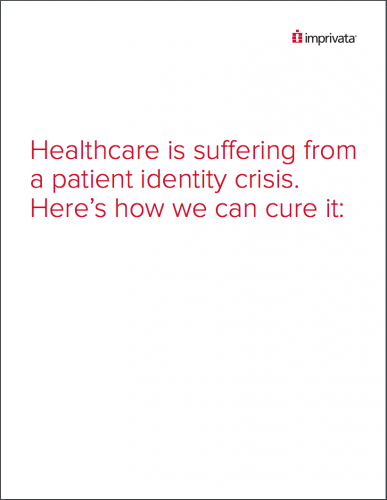How to improve patient care starting at registration
Wait times across all types of healthcare settings averaged nearly 19 minutes in 2017, according to a Vitals2 study. Practitioners with the longest wait times were emergency physicians (24.75 minutes on average) and general practitioners (22 minutes). Offices with shorter-than-average wait times tend to have more satisfied patients. The Vitals2 study found physicians with five-star ratings had average wait times of less than 13 minutes, while those with 22-minute wait times received only three stars on average. Lateness, medical emergencies, poor scheduling, multitasking (making phone calls and emailing), and pure economics are to blame for long wait times. But a quick check-in and registration process is only the tip of the iceberg when it comes to improving patient care.
The problem tends to be compounded at hospitals and large health systems that don’t necessarily have patients who have pre-scheduled an appointment. In that environment, being able to not only quickly admit patients with a seamless registration process, but also to ensure that they are connected to their correct medical record, is the first step in ensuring a positive patient experience.
Patient identification challenges
Duplicate medical records occur when a healthcare provider has more than one medical record for the same patient. Emergency departments are a major source of duplicate and incomplete records because many patients come in experiencing trauma, which prompts a “quick registration” with the hope that, after the patient has stabilized, they can go back and match the correct medical record. Even under normal registration circumstances, duplicates may be created due to name changes, or even simple mistyping. Inaccurate patient information and reliance on traditional patient identifiers can have an adverse effect on quality of care. An American Health Information Management Society (AHIMA) survey found the top challenges to effective patient matching were:
- Registration desk turnover
- Record matching/patient search terminology and/or algorithms
- Lack of resources to correct duplicates
- Inadequate information governance policy support
- Lack of executive support
Inaccurate data can result in serious medical errors, as well as a negative impact on an organization’s bottom line. Traditional patient identifiers, like Social Security Numbers, name, and date of birth, which must often be shared with registrars out loud – already posing a security risk – can be easily mistyped and could cause preventable medical errors. Preventable medical errors are the third leading cause of death in the U.S., causing an estimated 250,000 to 440,000 deaths per year.
If duplicate medical records exist, registrars may connect an incoming patient with a record that doesn’t showcase their full medical history, setting up the patient for a less than ideal care experience.
The value of positive patient identification
Positive patient identification is fundamental to streamlined patient care delivery that is free of medical errors, fraud, and record duplicates and overlays. Imprivata PatientSecure® prevents patient identification errors from where they originate: the registration desk. Imprivata PatientSecure is a positive patient identification platform that creates a 1:1 match between individual patients and their unique medical records, accurately retrieving patients' digital health records using biometric identification at registration and some other points of care. Imprivata PatientSecure integrates directly with a healthcare facility's EHR, ADT, EMPI, and other HIS systems. This improves patient identification by:
- Preventing medical errors and adverse events from misidentification
- Reducing duplicate medical records and overlays
- Preventing medical identity theft and insurance fraud
Ensuring a quality patient care experience starts with accurately identifying patients and their needs. A positive patient identification solution can streamline registration processes and ensure that patients are correctly identified, thus setting them up for an efficient care experience.
Featured resource
Sources:
https://healthitanalytics.com/news/patient-matching-issues-stem-from-poor-data-standardization
http://coniferhealth.com/knowledge-center/how-to-create-a-win-win-win-by-improving-patient-access/
https://www.beckershospitalreview.com/hospital-physician-relationships/how-long-is-the-average-wait-at-a-physician-s-office.html
https://www.hfma.org/PatientID/?trackref=auto
https://www.cnbc.com/2018/02/22/medical-errors-third-leading-cause-of-death-in-america.html

